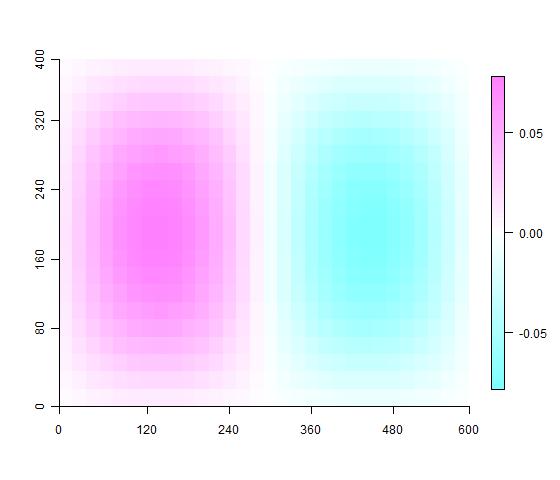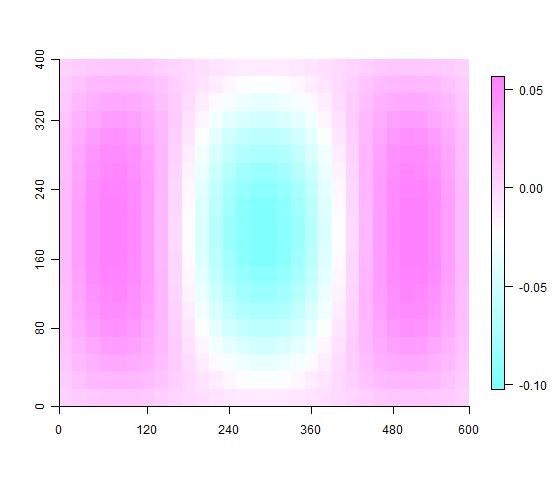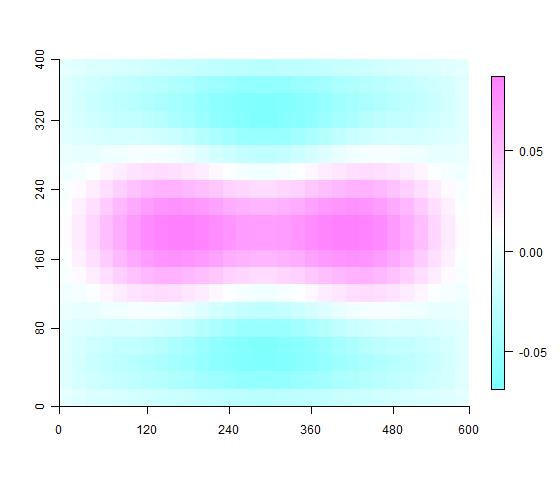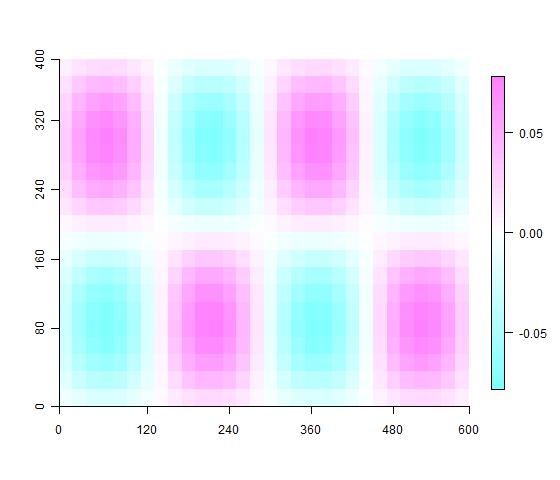1
2
3
4
5
6
7
8
9
10
11
12
13
14
15
16
17
18
19
20
21
22
23
24
25
26
27
28
29
30
31
32
33
34
35
36
37
38
39
40
41
42
43
44
45
46
47
48
49
50
51
52
53
54
55
56
57
58
59
60
61
62
63
64
65
66
67
68
69
70
71
72
73
74
75
76
77
78
79
80
81
82
83
84
|
imagevect <- function (x, labels, contour = FALSE, gridsize = 20,
axes = TRUE, nlabx = 5, nlaby = 5, ...)
{
require(fields)
dimension <- function(x, unique = FALSE, sort = FALSE){
ncharX <- substring(x, 2, regexpr("Y", x)-1)
ncharY <- substring(x, nchar(ncharX)+3, nchar(x))
if(unique){
ncharX = unique(ncharX)
ncharY = unique(ncharY)
}
if(sort){
ncharX = sort(as.numeric(ncharX))
ncharY = sort(as.numeric(ncharY))
}
res <- list(ncharX, ncharY)
return(res)
}
formatXY <- function(x){
ncharX <- substring(x, 2, regexpr("Y", x)-1)
ncharY <- substring(x, nchar(ncharX)+3, nchar(x))
resX <- c()
for(i in 1:length(ncharX)){
n0x <- paste( rep(rep(0, length(ncharX[i])),
times = (max(nchar(ncharX)) - nchar(ncharX[i]) + 1)),
collapse = "", sep = "")
resX[i] <- paste("X", substring(n0x, 2, nchar(n0x)), ncharX[i], collapse = "", sep = "")
}
resY <- c()
for(i in 1:length(ncharY)){
n0x <- paste( rep(rep(0, length(ncharY[i])),
times = (max(nchar(ncharY)) - nchar(ncharY[i]) + 1)),
collapse = "", sep = "")
resY[i] <- paste("Y", substring(n0x, 2, nchar(n0x)), ncharY[i], collapse = "", sep = "")
}
res <- paste(resX, resY, sep = "")
return(res)
}
sort.x <- x[order(formatXY(labels))]
rrr <- dimension(labels, unique = TRUE, sort = TRUE)
dims <- c(length(rrr[[2]]), length(rrr[[1]]))
dim(sort.x) <- dims
par(xaxs = "i", yaxs = "i")
image.plot(nnn <- t(sort.x), axes = FALSE, ...)
if (contour) {
contour(nnn, add = TRUE, ...)
}
if (axes) {
points(0, 0, pch = " ", cex = 3)
get.axis.ticks <-
function(nlabs = NULL, gridsize = NULL, limit_max = NULL){
ngrid <- (limit_max-0)/gridsize
per_grid <- 1/(ngrid-1)
start <- 0 - (1/(ngrid-1))/2
stop <- 1 + (1/(ngrid-1))/2
lab <-(0:nlabs*(limit_max/nlabs))
at <- seq(from = start, to = stop,
by = ((1 + per_grid))/((length(lab)-1)))
return(list(lab, at))
}
xaxis.position <- get.axis.ticks(nlabs = nlabx, gridsize = gridsize,
limit_max = gridsize * nrow(nnn))
yaxis.position <- get.axis.ticks(nlabs = nlaby, gridsize = gridsize,
limit_max = gridsize * ncol(nnn))
axis(1, labels = xaxis.position[[1]], at = xaxis.position[[2]])
axis(2, labels = yaxis.position[[1]], at = yaxis.position[[2]])
}
invisible(nnn)
}
|









